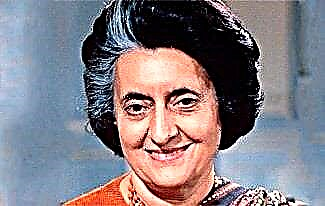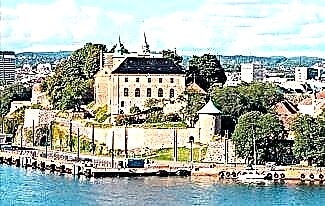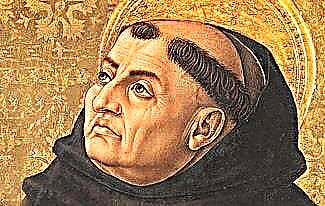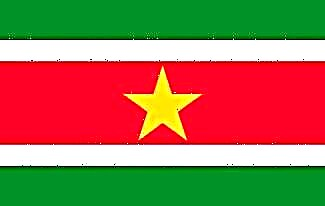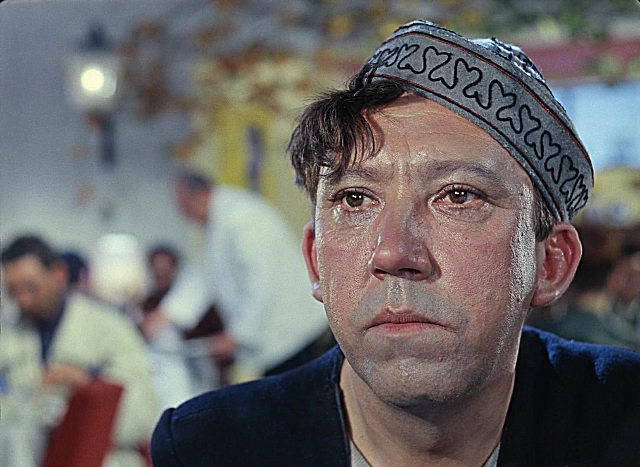Martin Bormann (1900-1945) - German statesman and politician, head of the NSDAP Party Chancellery, Hitler's personal secretary (1943-1945), Chief of Staff of the Deputy Fuhrer (1933-1941) and Reichsleiter (1933-1945).
Having almost no education, he became the closest associate of the Fuhrer, as a result of which he received the nicknames "the shadow of Hitler" and "the gray cardinal of the Third Reich."
By the end of World War II, he had gained significant influence as a personal secretary, controlling the flow of information and access to Hitler.

Bormann was one of the initiators of the persecution of Christians, Jews and Slavs. For a number of serious crimes against humanity at the Nuremberg Trials, he was sentenced in absentia to death by hanging.
There are many interesting facts in Bormann's biography, which we will talk about in this article.
So, before you is a short biography of Martin Bormann.
Bormann's biography
Martin Bormann was born on June 17, 1900 in the German city of Wegeleben. He grew up and was raised in the Lutheran family of Theodor Bormann, who worked in the post office, and his wife, Antonia Bernhardina Mennong.
In addition to Martin, his parents had another son, Albert. The Nazi also had a half-brother and sister from his father's previous marriage.
Childhood and youth
The first tragedy in the biography of Martin Bormann happened at the age of 3, when his father died. After that, the mother remarried to a small banker. Later, the boy began to study farming in one of the estates.
In mid-1918, Martin was called up to serve in an artillery regiment. It is worth noting that he was not at the front, all the while remaining in the garrison.
Returning home, Bormann worked briefly at the mill, after which he ran a large farm. He soon joined an anti-Semitic organization whose members were farmers. When inflation and unemployment began in the country, farmers' fields began to be plundered frequently.
This led to the fact that in Germany, special detachments of the Freikor began to form, which guarded the possessions of farmers. In 1922 Martin joined such a unit, where he was appointed commander and treasurer.
A couple of years later, Bormann helped his friend kill a school teacher, whom the criminals suspected of espionage. For this he was sentenced to a year in prison, after which he was released on parole.
Career
As soon as Martin Bormann joined the Nazi Party in 1927, he got a job at a propaganda newspaper as a press secretary. However, due to the lack of oratorical talent, he decided to leave journalism and take up economic affairs.
The following year, Bormann settled in Munich, where he initially served in the Assault Division (SA). A couple of years later, he left the ranks of the SA to head up the "Nazi Party Mutual Aid Fund" he founded.
Martin introduced a system whereby every party member was required to contribute to the fund. The proceeds were intended for party members who were injured or killed in the struggle for the development of Nazism. At the same time, he solved personnel issues, and also created an automobile corps, the purpose of which was to provide transport for the members of the NSDAP.

When the Nazis came to power in 1933, Bormann was entrusted with the post of Chief of Staff of Deputy Fuhrer Rudolf Hess and his secretary. For his good service he was promoted to the rank of Reichsleiter.
Later, Hitler became so close to Martin that the latter gradually began to perform the functions of his personal secretary. At the beginning of 1937, Bormann was awarded the title of SS Gruppenfuehrer, in connection with which his influence in Germany became even greater.
Whenever the Fuehrer made any oral orders, he often conveyed them through Martin Bormann. As a result, when someone fell into the disgrace of the "gray eminence", he was essentially deprived of access to Hitler.
By his intrigues, Bormann limited the power of Goebbels, Goering, Himmler and other prominent figures. Thus, he had many enemies, whom he disgusted.

In 1941, the head of the Third Reich appointed Martin to lead the Party Chancellery, which was subordinate only to Hitler and no one else. Thus, Bormann received virtually unlimited power, which only grew every year.
The man was constantly next to the Fuhrer, as a result of which Martin began to call him "shadow". When Hitler began to persecute believers, Bormann fully supported him in this.
Moreover, he called for the destruction of all temples and religious relics. He especially hated Christianity, as a result of which many priests were exiled to concentration camps.
At the same time, Bormann fought with all his might against the Jews, welcoming their liquidation in the gas chambers. Thus, he was one of the main perpetrators of the Holocaust, during which about 6 million Jews died.
In January 1945, Martin together with Hitler settled in the bunker. Until the last day he was loyal to the Fuehrer, carrying out all his orders.
Personal life
When Bormann was 29 years old, he married Gerda Buch, who was 10 years younger than her chosen one. The girl was the daughter of Walter Buch, the chairman of the Supreme Party Court.
An interesting fact is that Adolf Hitler and Rudolf Hess were witnesses at the wedding of the newlyweds.
Gerda was really in love with Martin, who often cheated on her and did not even try to hide it. It is curious that when he began an affair with actress Manya Behrens, he openly notified his wife about this, and she advised him what to do.
This unusual behavior of the girl was largely due to the fact that she advocated polygamy. At the height of the war, Gerda encouraged the Germans to enter into several marriages at the same time.

The Borman family had 10 children, one of whom died in childhood. An interesting fact is that the firstborn of the married couple, Martin Adolf, later became a Catholic priest and missionary.
At the end of April 1945, Bormann's wife and her children fled to Italy, where exactly a year later she died of cancer. After her death, the children were brought up in an orphanage.
Death
Martin Bormann's biographers still cannot agree on where and when the Nazi died. After the Fuhrer's suicide, he, along with three associates, attempted to escape from Germany.
After some time, the group split up. After that, Bormann, accompanied by Stumpfegger, tried to cross the Spree River, hiding behind a German tank. As a result, Russian soldiers started shooting at the tank, as a result of which the Germans were destroyed.
Later, the bodies of the fleeing Nazis were found on the coast, with the exception of the body of Martin Bormann. For this reason, many versions have appeared according to which the “gray cardinal of the Third Reich” was considered a survivor.
British intelligence officer Christopher Creighton stated that Bormann changed his appearance and fled to Paraguay, where he died in 1959. The head of the Federal Intelligence Service and ex-Nazi intelligence officer Reinhard Gehlen assured that Martin was a Russian agent and after the war went to Moscow.
Theories were also put forward that the man was hiding in Argentina, Spain, Chile and other countries. In turn, the authoritative Hungarian writer Ladislas Faragodazhe publicly admitted that he personally spoke with Bormann in Bolivia in 1973.
During the Nuremberg trials, the judges, lacking sufficient evidence of the death of the Nazi, sentenced him in absentia to death by hanging. The best intelligence services in the world were looking for Martin Bormann, but none of them achieved success.
In 1971, the FRG authorities announced the termination of the search for the "shadow of Hitler". However, a year later, human remains were found that could have belonged to Bormann and Stumpfegger.
After extensive research, including facial reconstruction, experts concluded that these were indeed the remains of Bormann and his associate. In 1998, a DNA examination was carried out, which finally dispelled doubts that the bodies found belonged to Bormann and Stumpfegger.
Bormann Photos









